
Graphic Heroes Of The American Revolution by Gary Jeffrey and Nick Spender
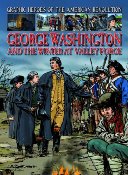 After reading through all of the graphic novel series, Graphic Heroes of The American Revolution, by Gary Jeffrey, I’ve noticed something they all have in common: they all seem to be the whole story of a part of the American Revolution that is often misconstrued. I am a freshman in high school currently taking an American History class, so it’s been interesting to see how these books work. Jeffrey did a great job and paid enormous attention to detail in making sure that commonly misunderstood facts were clear.
After reading through all of the graphic novel series, Graphic Heroes of The American Revolution, by Gary Jeffrey, I’ve noticed something they all have in common: they all seem to be the whole story of a part of the American Revolution that is often misconstrued. I am a freshman in high school currently taking an American History class, so it’s been interesting to see how these books work. Jeffrey did a great job and paid enormous attention to detail in making sure that commonly misunderstood facts were clear.
The series consisted of a book about the Boston Tea Party (reviewed earlier), Washington and Valley Forge, Paul Revere, Thomas Jefferson’s writing of the Declaration, Thomas Paine’s writing of Common Sense, and John Adams’ defense of the soldiers in the Boston Massacre. They all were in similar form to the first one I read. They each started and ended with a few pages of historical facts about what was going on at the time. My favorite was probably Paul Revere and his Midnight Ride, because of how little I knew about him, before I read the book. Of course, he’s the guy that rode the horse, “One if by land, two if by sea,†and all that, but I didn’t know much else. Who really does at my age? Jeffrey tells us the whole story and does a great job making it interesting while doing it. Revere was the one responsible for readying the colonists for the Battles of Lexington and Concord.. Really, without him, the war would have probably been much shorter and ended less favorably for the colonists.  I feel like I might not have ever known that if it hadn’t been presented to me in a manner that kept me interested long enough to want to learn about it.
The books all seem to share that ability to maintain one’s interest, and it may or may not be because they are in graphic novel form. The artwork is all very accurate and vibrant, and the text is succinct enough to keep one’s attention. Although, as I said before, the typical “speech bubble†format almost seems out of place for something like this, but it fits in with the form of the books.
Each of the books focuses on a particular character whose importance in the Revolution is outlined in the novel. They provide insight into little-known (by me, anyway) topics such as the writing of Common Sense and The Declaration of Independence, and about particular people who did unexpected things, such as Washington’s survival with his troops at Valley Forge or the fact that John Adams defended the British soldiers after the Boston Massacre. Since popular history always defines John Adams as a true American patriot, it was really interesting to learn that he played a part in the defense of British soldiers. And while I always knew Washington was “the indispensable man,† I don’t know if I ever really knew all the trouble he went through with his men at Valley Forge. In addition, I never realized the influence all the Founding Fathers had on the Declaration of Independence; I always assumed that Jefferson was the only one who worked on it. To top all of this, I never knew anything about Thomas Paine other than the fact that he wrote Common Sense.
The series provides a lot of insight into all of these things, and manages to do it rather beautifully. The artwork is great, and the books end with a well-drawn, close-up of the character they focus on. These pictures are all historically accurate and portray the likeness of the men well. The books have a few different illustrators who each focus on different things. Nick Spender seems to focus more on capturing the likeness of the person and puts a lot of effort into skin tone and texture. Emanuelle Boccanfuso’s artwork looks more like the line-art of popular comics, but he does an incredible job with shading and colors, especially evident in Thomas Jefferson and the Declaration of Independence, with its different lighting tones. The last illustrator is James Field, whose work focuses a lot on the landscape and making the horses look very realistic with muscle tone and color.
Overall, I really like these books. They look very nice, they offer a lot of little-known information, while being able to maintain the attention of someone like me. I feel like I came away from this experience knowing a lot more about the people involved in the foundation of America than I did before, and how all of their actions led up to our country now. This is the way American History textbooks should be made, in my opinion.
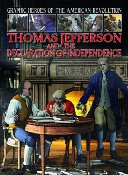
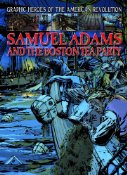
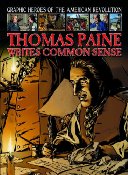
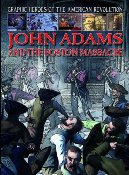
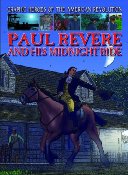
 The posts are coming!
The posts are coming!

2 comments
Bully review. Thanks for posting. Will recommend to anyone I think would benefit by reading – perhaps starting with the President?
[Reply]
Great Job, Matthew!
[Reply]
Leave a Comment